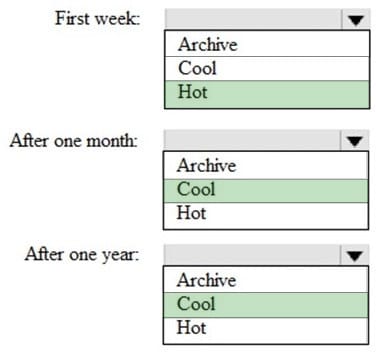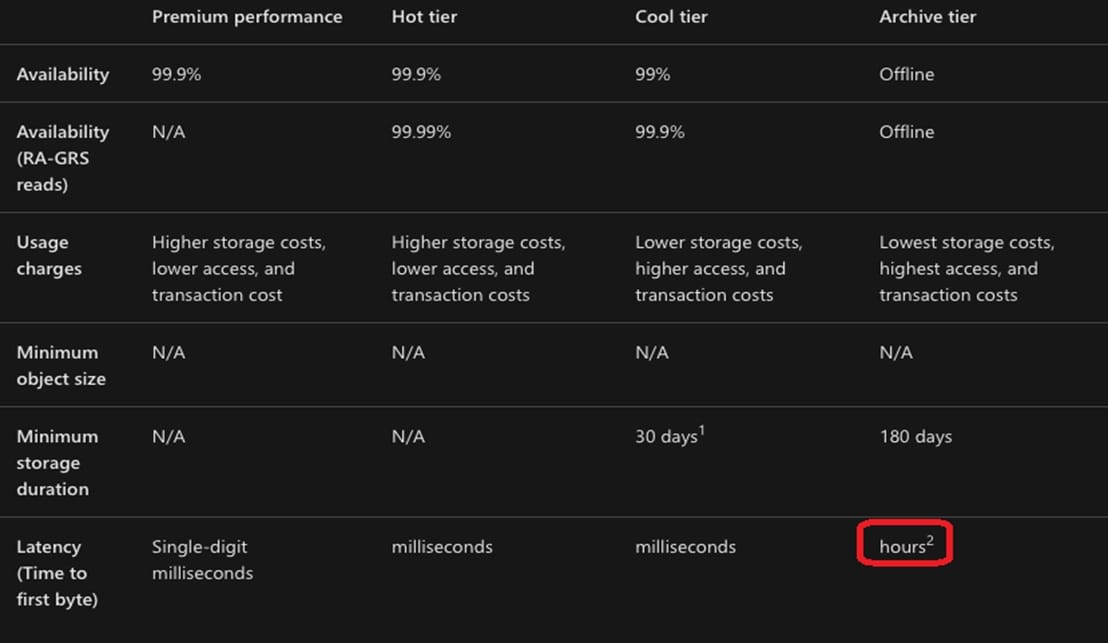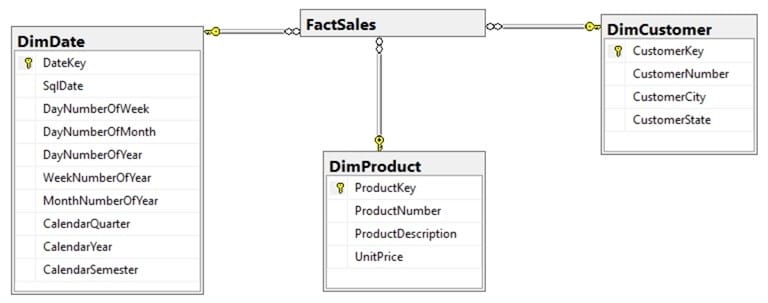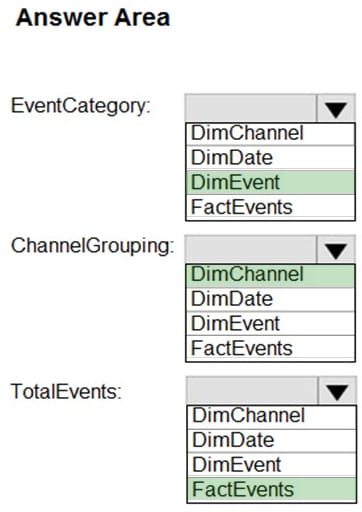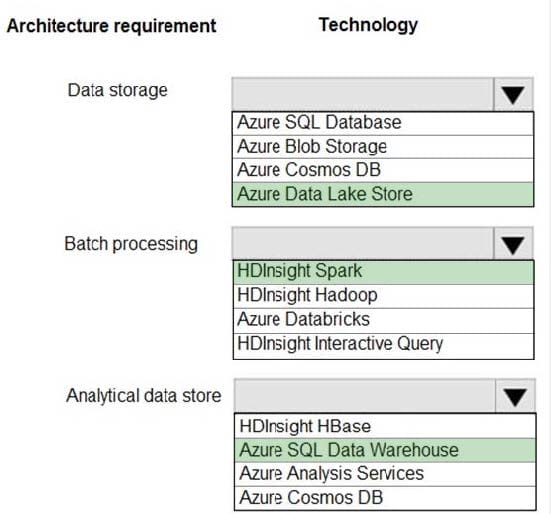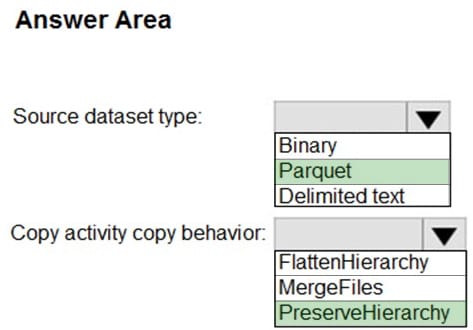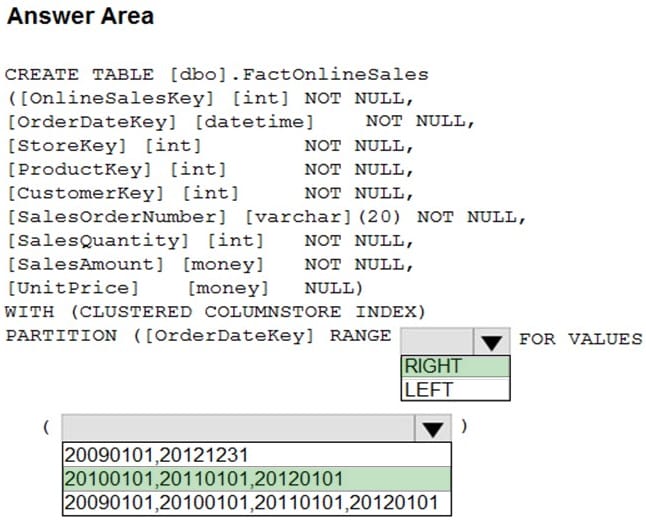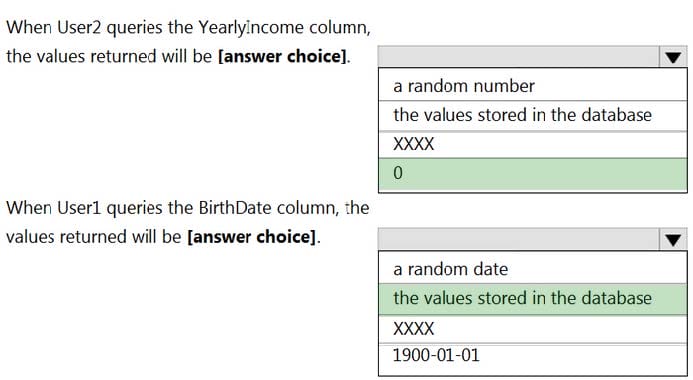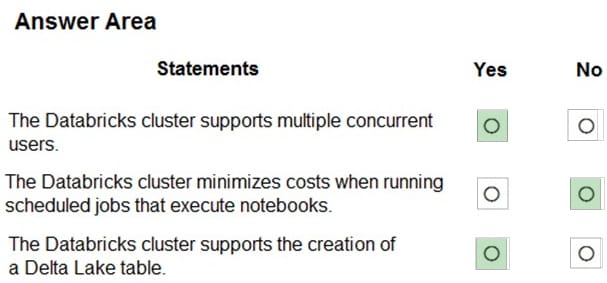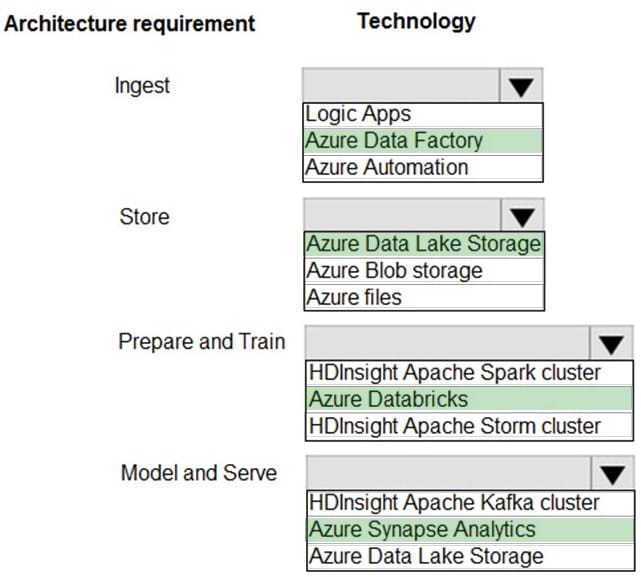Exam Details
Exam Code
:DP-203Exam Name
:Data Engineering on Microsoft AzureCertification
:Microsoft CertificationsVendor
:MicrosoftTotal Questions
:414 Q&AsLast Updated
:Jun 29, 2025
Microsoft Microsoft Certifications DP-203 Questions & Answers
-
Question 101:
HOTSPOT
You are designing an application that will store petabytes of medical imaging data
When the data is first created, the data will be accessed frequently during the first week. After one month, the data must be accessible within 30 seconds, but files will be accessed infrequently. After one year, the data will be accessed
infrequently but must be accessible within five minutes.
You need to select a storage strategy for the data. The solution must minimize costs.
Which storage tier should you use for each time frame? To answer, select the appropriate options in the answer area.
NOTE: Each correct selection is worth one point.
Hot Area:
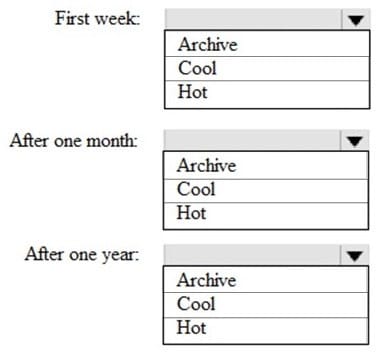
-
Question 102:
HOTSPOT
You have a Microsoft SQL Server database that uses a third normal form schema.
You plan to migrate the data in the database to a star schema in an A?\ire Synapse Analytics dedicated SQI pool.
You need to design the dimension tables. The solution must optimize read operations.
What should you include in the solution? to answer, select the appropriate options in the answer area.
NOTE: Each correct selection is worth one point.
Hot Area:

-
Question 103:
HOTSPOT
From a website analytics system, you receive data extracts about user interactions such as downloads, link clicks, form submissions, and video plays.
The data contains the following columns.

You need to design a star schema to support analytical queries of the data. The star schema will contain four tables including a date dimension.
To which table should you add each column? To answer, select the appropriate options in the answer area.
NOTE: Each correct selection is worth one point.
Hot Area:
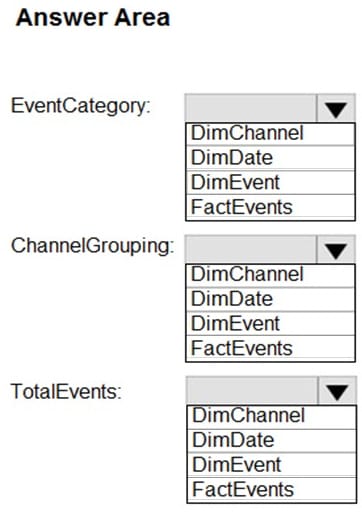
-
Question 104:
HOTSPOT
You are developing a solution using a Lambda architecture on Microsoft Azure.
The data at test layer must meet the following requirements:
Data storage:
1.
Serve as a repository (or high volumes of large files in various formats.
2.
Implement optimized storage for big data analytics workloads.
3.
Ensure that data can be organized using a hierarchical structure.
Batch processing:
1.
Use a managed solution for in-memory computation processing.
2.
Natively support Scala, Python, and R programming languages.
3.
Provide the ability to resize and terminate the cluster automatically.
Analytical data store:
1.
Support parallel processing.
2.
Use columnar storage.
3.
Support SQL-based languages.
You need to identify the correct technologies to build the Lambda architecture.
Which technologies should you use? To answer, select the appropriate options in the answer area NOTE: Each correct selection is worth one point.
Hot Area:
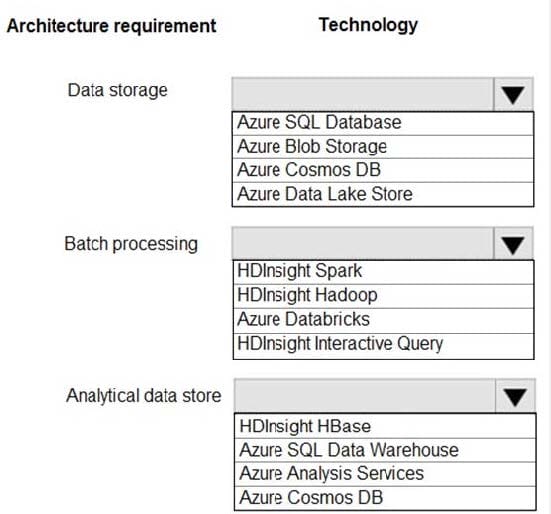
-
Question 105:
HOTSPOT
You have a SQL pool in Azure Synapse.
You plan to load data from Azure Blob storage to a staging table. Approximately 1 million rows of data will be loaded daily. The table will be truncated before each daily load.
You need to create the staging table. The solution must minimize how long it takes to load the data to the staging table.
How should you configure the table? To answer, select the appropriate options in the answer area.
NOTE: Each correct selection is worth one point.
Hot Area:
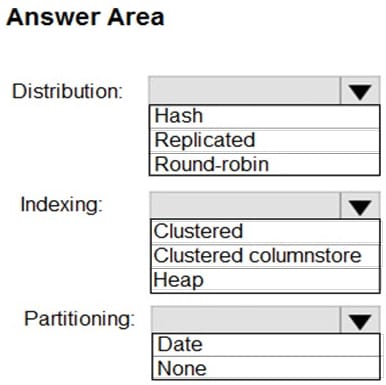
-
Question 106:
HOTSPOT
You have two Azure Storage accounts named Storage1 and Storage2. Each account holds one container and has the hierarchical namespace enabled. The system has files that contain data stored in the Apache Parquet format.
You need to copy folders and files from Storage1 to Storage2 by using a Data Factory copy activity. The solution must meet the following requirements:
1.
No transformations must be performed.
2.
The original folder structure must be retained.
3.
Minimize time required to perform the copy activity.
How should you configure the copy activity? To answer, select the appropriate options in the answer area.
NOTE: Each correct selection is worth one point.
Hot Area:
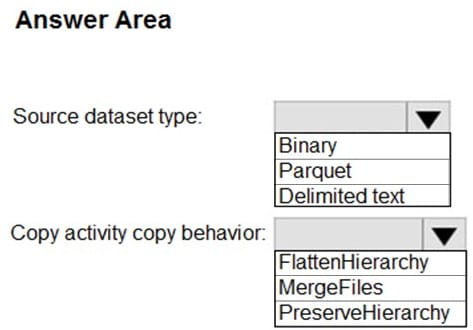
-
Question 107:
HOTSPOT
You have an enterprise data warehouse in Azure Synapse Analytics that contains a table named FactOnlineSales. The table contains data from the start of 2009 to the end of 2012.
You need to improve the performance of queries against FactOnlineSales by using table partitions. The solution must meet the following requirements:
1.
Create four partitions based on the order date.
2.
Ensure that each partition contains all the orders places during a given calendar year.
How should you complete the T-SQL command? To answer, select the appropriate options in the answer area.
NOTE: Each correct selection is worth one point.
Hot Area:
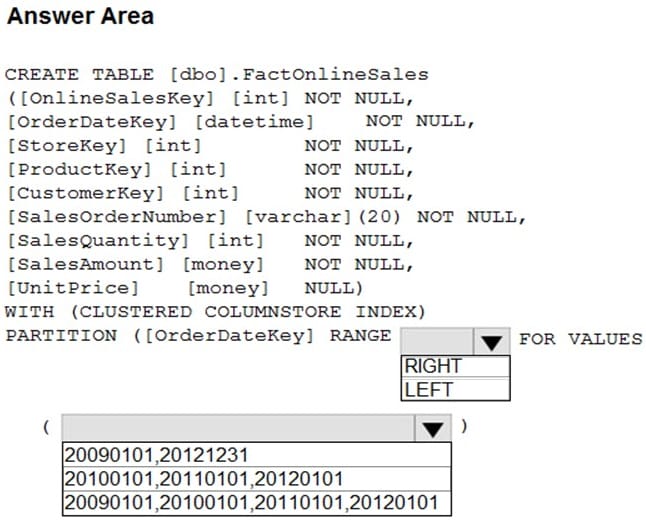
-
Question 108:
HOTSPOT
You have an Azure Synapse Analytics dedicated SQL pool that contains the users shown in the following table.

User1 executes a query on the database, and the query returns the results shown in the following exhibit.
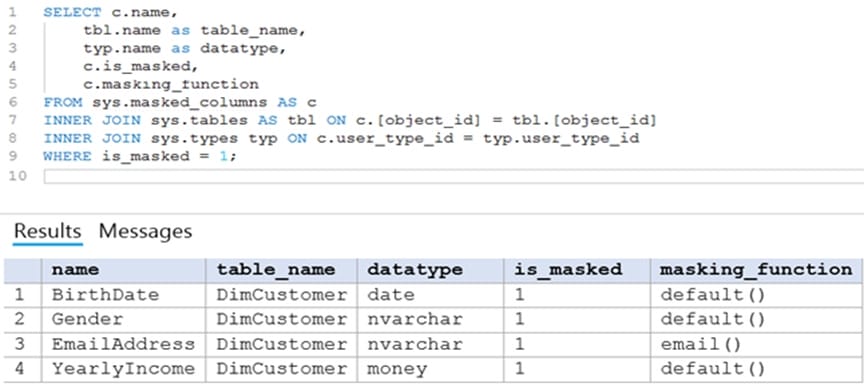
User1 is the only user who has access to the unmasked data.
Use the drop-down menus to select the answer choice that completes each statement based on the information presented in the graphic.
NOTE: Each correct selection is worth one point.
Hot Area:
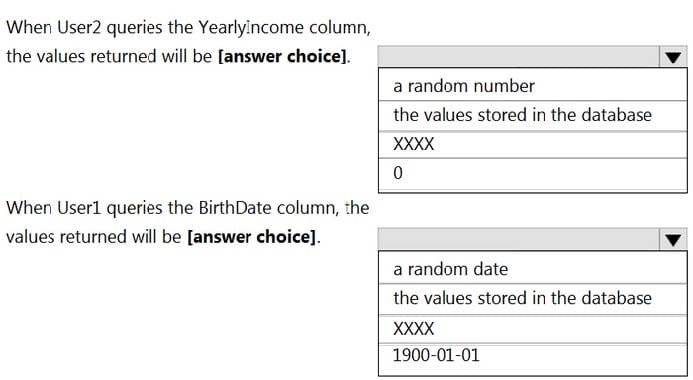
-
Question 109:
HOTSPOT
The following code segment is used to create an Azure Databricks cluster.
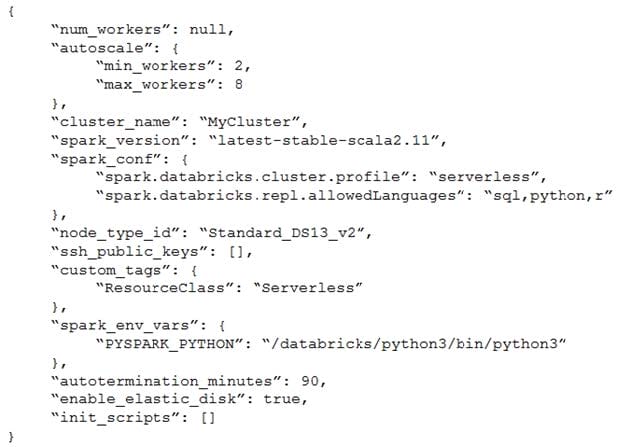
For each of the following statements, select Yes if the statement is true. Otherwise, select No.
NOTE: Each correct selection is worth one point.
Hot Area:
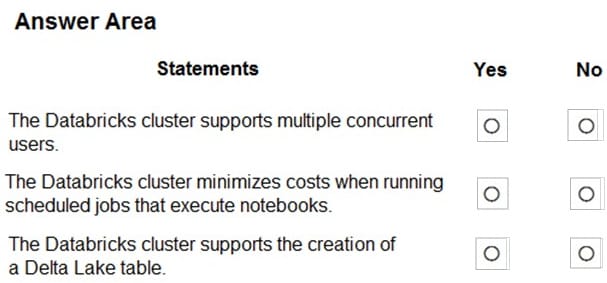
-
Question 110:
HOTSPOT
A company plans to use Platform-as-a-Service (PaaS) to create the new data pipeline process. The process must meet the following requirements:
Ingest:
1.
Access multiple data sources.
2.
Provide the ability to orchestrate workflow.
3.
Provide the capability to run SQL Server Integration Services packages.
Store:
1.
Optimize storage for big data workloads.
2.
Provide encryption of data at rest.
3.
Operate with no size limits.
Prepare and Train:
1.
Provide a fully-managed and interactive workspace for exploration and visualization.
2.
Provide the ability to program in R, SQL, Python, Scala, and Java.
3.
Provide seamless user authentication with Azure Active Directory.
Model and Serve:
1.
Implement native columnar storage.
2.
Support for the SQL language
3.
Provide support for structured streaming.
You need to build the data integration pipeline.
Which technologies should you use? To answer, select the appropriate options in the answer area.
NOTE: Each correct selection is worth one point.
Hot Area:

Related Exams:
62-193
Technology Literacy for Educators70-243
Administering and Deploying System Center 2012 Configuration Manager70-355
Universal Windows Platform – App Data, Services, and Coding Patterns77-420
Excel 201377-427
Excel 2013 Expert Part One77-725
Word 2016 Core Document Creation, Collaboration and Communication77-726
Word 2016 Expert Creating Documents for Effective Communication77-727
Excel 2016 Core Data Analysis, Manipulation, and Presentation77-728
Excel 2016 Expert: Interpreting Data for Insights77-731
Outlook 2016 Core Communication, Collaboration and Email Skills
Tips on How to Prepare for the Exams
Nowadays, the certification exams become more and more important and required by more and more enterprises when applying for a job. But how to prepare for the exam effectively? How to prepare for the exam in a short time with less efforts? How to get a ideal result and how to find the most reliable resources? Here on Vcedump.com, you will find all the answers. Vcedump.com provide not only Microsoft exam questions, answers and explanations but also complete assistance on your exam preparation and certification application. If you are confused on your DP-203 exam preparations and Microsoft certification application, do not hesitate to visit our Vcedump.com to find your solutions here.
